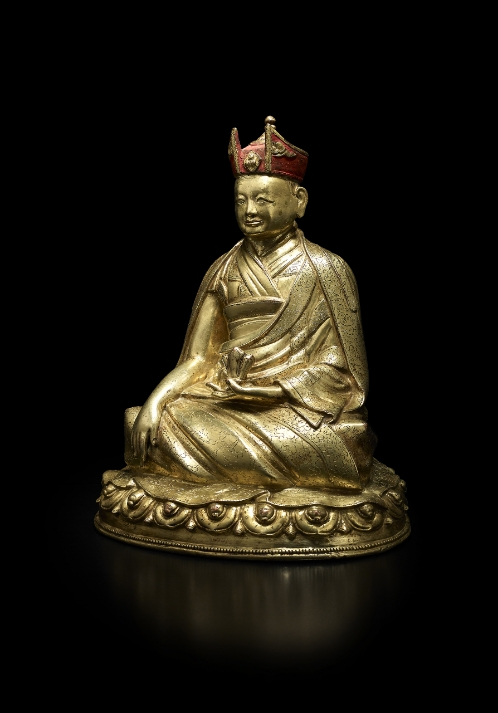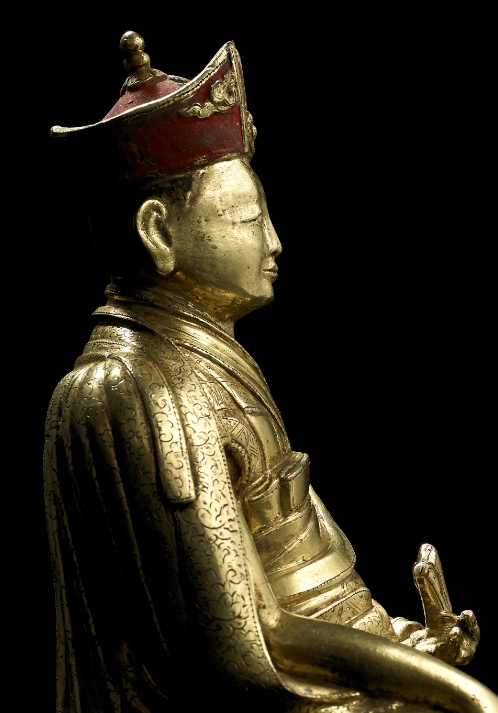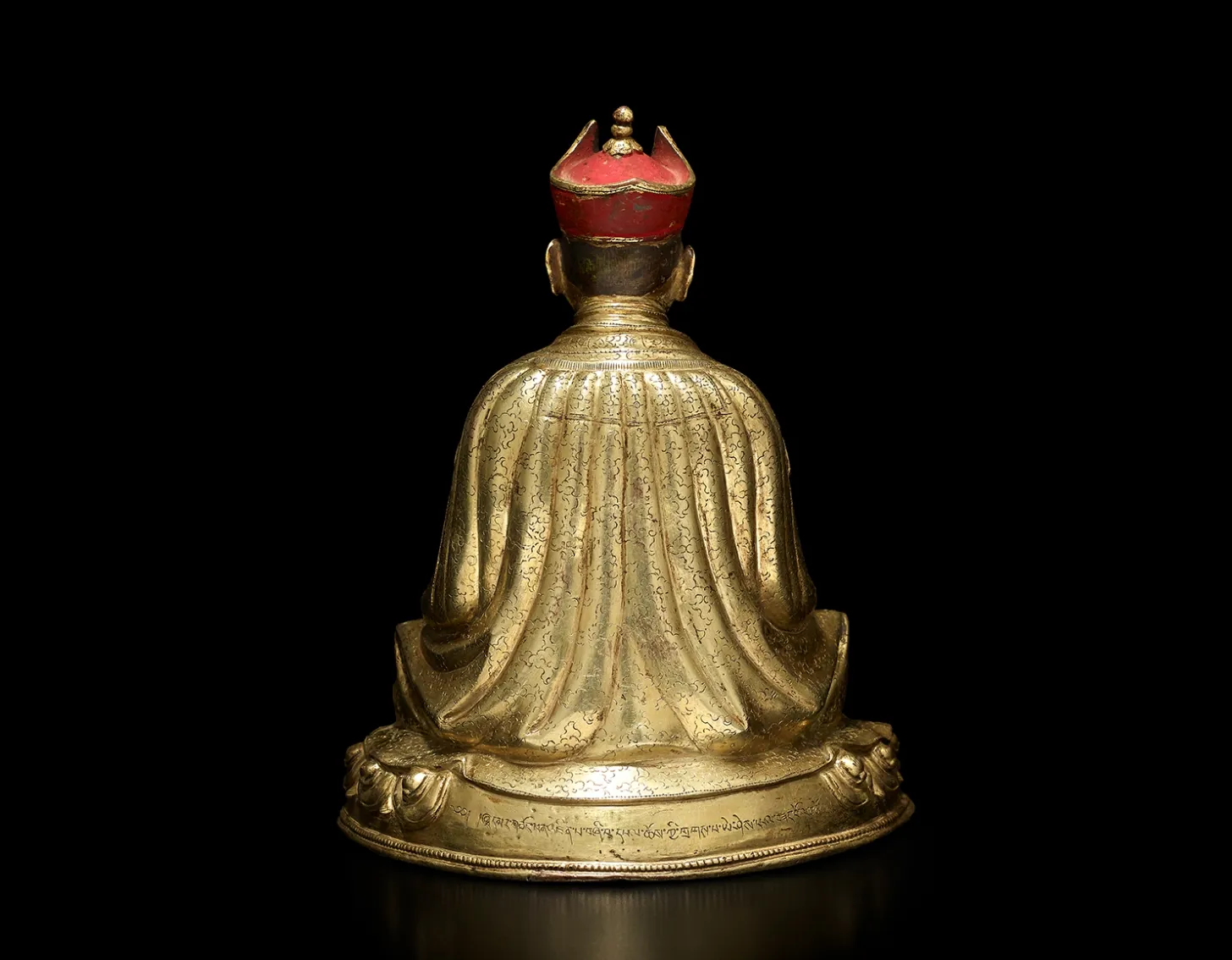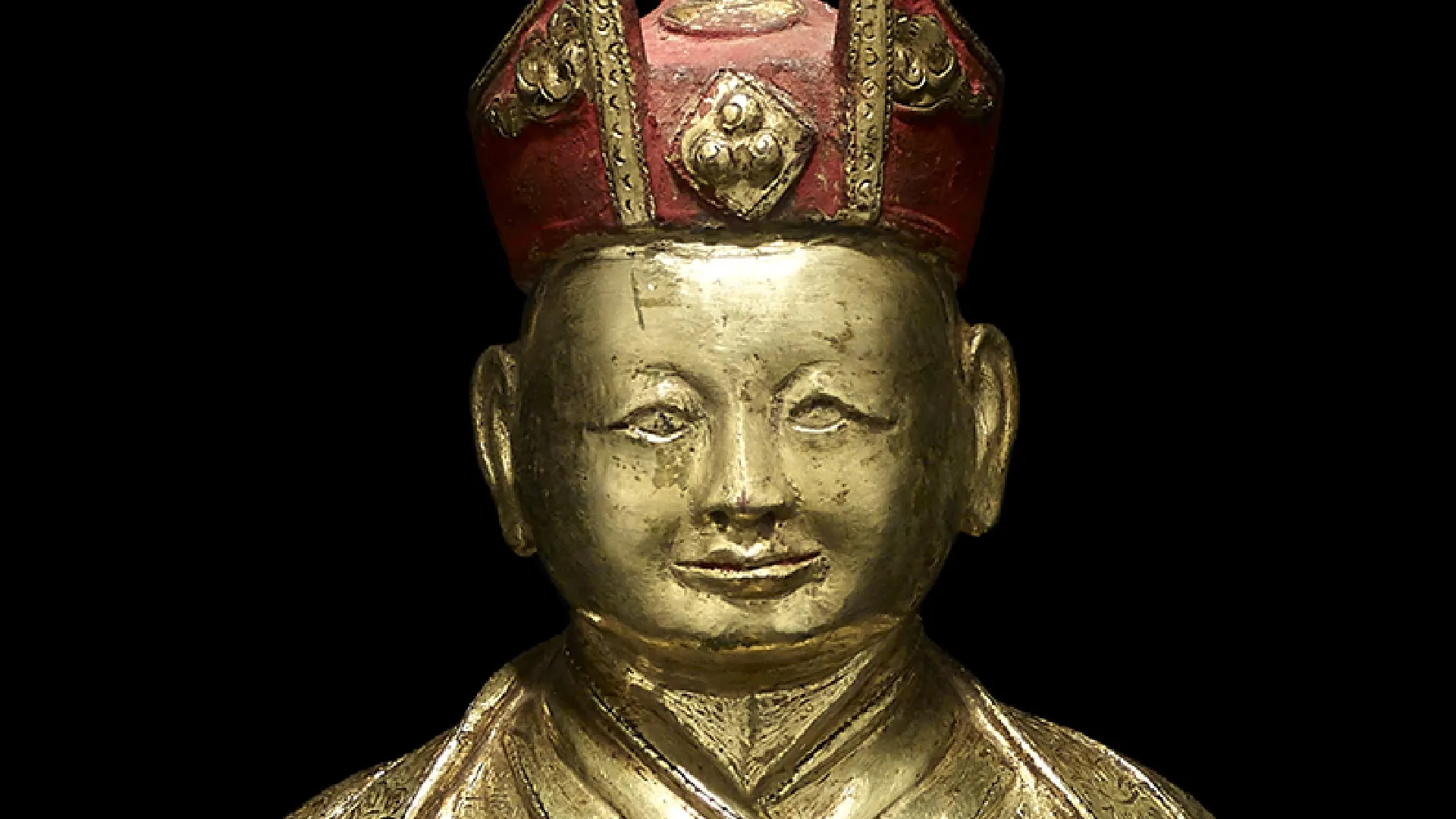By the thirteenth century, religious communities in Tibet sought to create patterns of succession whereby charismatic leaders could successfully transfer their teachings and their monastery’s wealth to the next generation, thereby providing firm economic, social, and political foundations for their institutions. The Karmapas, a branch of the Kagyu order, may have been the first to initiate a mode of institutional succession based on reincarnation. This ensured continuity in their rule and it eliminated the debilitating sibling rivalry that inevitably plagued biological succession. As one author put it, it facilitated “transition from charisma of person to a charisma of office.” The Third Karmapa, Rangchung Dorje (1284-1339), predicted the place of his future reincarnation and proclaimed his identity with his predecessor Karma Pakshi. Thus, it became traditional that a Karmapa, when near death, would prophesy his own rebirth. His attendants would follow clues to discover a new born infant who exhibits characteristics of the master. The infant was then taken to the deceased leader’s seat and taught to assume his responsibilities.


The related Sharmapa lineage traces its origin to the First Sharmapa Drakpa Sengge (grags pa seng ge, 1283-1349) who was the main disciple of the Third Karmapa Rangchung Dorje. Rangchung Dorje bestowed on his disciple the red cap that became emblematic of the Sharmapa (Red Hat) lineage. A c. 15th-16th century sculpture in the collection represents the Fourth Sharmapa, Chokyi Drakpa Yeshe Pal Zangpo (1453-1526) (cat. no. 14). With kindly expression, the figure holds the three jewels (triratna) in his left palm, reaching his right hand towards the earth in a gesture known as bhumisparsha (earth-touching). This gesture was associated with legends about the historical Buddha’s enlightenment and equally proclaims the enlightenment of whomever adopts it (cat. no. 14.2). The Sharmapa wears the red hat that is emblematic of his office and which is seen in other depictions of this figure.
Great attention has been lavished on the hierarch’s robes, not only the incised floral patterns of the fabric, but also the reinforced stitching below the neck at the back, which would have been required to maintain the heavy material’s large pleats (cat. no. 14.1&2). The hair is painted dark brown, suggesting the Sharmapa may have been conceived as middle-aged for this commission.

